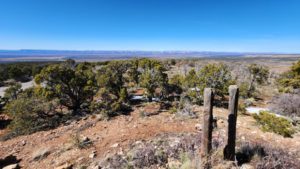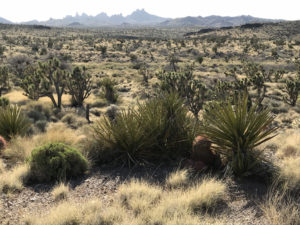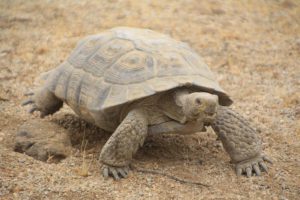For Immediate Release – August 10, 2023
Media Contacts:
Cyndi Tuell, Western Watersheds Project, (520) 272-2454, cyndi@westernwatersheds.org
Sandy Bahr, Grand Canyon Chapter of the Sierra Club, (602) 999-5790 sandy.bahr@sierraclub.org
Laurie Rule, Advocates for the West(503) 914-6388, lrule@advocateswest.org
TUCSON, Ariz. – Western Watersheds Project and the Sierra Club-Grand Canyon Chapter, represented by Advocates for the West, won a lawsuit yesterday that stops livestock grazing authorizations in the Sonoran Desert National Monument. This is the second time a judge has determined that the Bureau of Land Management relied on faulty information to justify livestock grazing on hot desert landscapes within the Monument. The Bureau based their analysis of livestock impacts, and their decision to allow grazing, on the flawed premise that livestock don’t travel more than two miles from water sources. The judge also found that the agency lowered the bar for determining whether the plants found in the Monument were harmed by livestock grazing.
“We will continue our fight to ensure this Monument is protected for current and future generations, not sacrificed to special interest groups trying to maintain an outdated lifestyle,” said Cyndi Tuell, the Arizona and New Mexico director for Western Watersheds Project. “Even just a few dozen livestock could cause permanent damage to these ecologically important desert lands and we are glad the Court has held the Bureau accountable for protecting those lands.”
“Once again, a court ruled that the Bureau can’t just massage the data in order to support their foregone conclusions to allow livestock grazing on this fragile desert monument,” said Sandy Bahr, director for Sierra Club’s Grand Canyon (Arizona) Chapter. “The agency’s determinations were based on flawed assumptions about the impacts of livestock use despite mountains of evidence showing that, in fact, grazing does impact many of the Monument’s protected plants, animals, and cultural resources.”
The agency’s 2020 decision was issued after a fast-tracked environmental review process that began in March of 2020 and was completed by July of that same year. The two plaintiff groups have been wrangling in the courts over grazing in the Monument for over a decade, represented by Laurie Rule, an attorney with Advocates for the West. The ongoing fight has been an attempt to get the Bureau to make a science-based decision that comports with the 2001 Presidential Proclamation that prohibited any livestock grazing use unless it was compatible with the protection of saguaro cacti forests, desert tortoises, bighorn sheep, Sonoran pronghorn, palo verde and ironwood trees, rare patches of desert grasslands, as well as significant archaeological and historic sites.
“Since 2015, when a federal judge agreed with us that the Bureau must use accurate information and make a science-based decision on whether livestock are suitable here, we’ve been waiting for the agency to do the right thing,” said attorney Laurie Rule. “They have once again been caught ignoring the data they had and lowering the bar for identifying grazing impacts, instead of taking a hard look at the actual impacts of livestock on the Monument.”
In her ruling, the judge recognized that the agency’s records show that moderate to severe damage to soils and vegetation from livestock still scar the fragile cactus forests of the National Monument, 10 or more years since the last cattle departed, in some cases. The judge has remanded the decision back to the Bureau of Land Management. The agency will have to try, for a third time, to make a rational and science-based decision as to whether or not livestock grazing can be compatible with protecting the fragile biological and cultural resources on the Sonoran Desert National Monument.
“Yesterday’s decision gives us hope that the land managers will finally face the reality that grazing cows in hot desert ecosystems just doesn’t make sense,” said Tuell.
The challenged decision would have allowed hundreds of cow-calf pairs to graze on Monument lands north of Interstate 8, which are the traditional homeland of the O’odham, Yavapai Apache, Cocopah, and Hohokam peoples. The 150,000-acre Monument is located just west of Phoenix and is home to the Sonoran desert tortoise, the saguaro cactus, and is rich in cultural resources.
###





